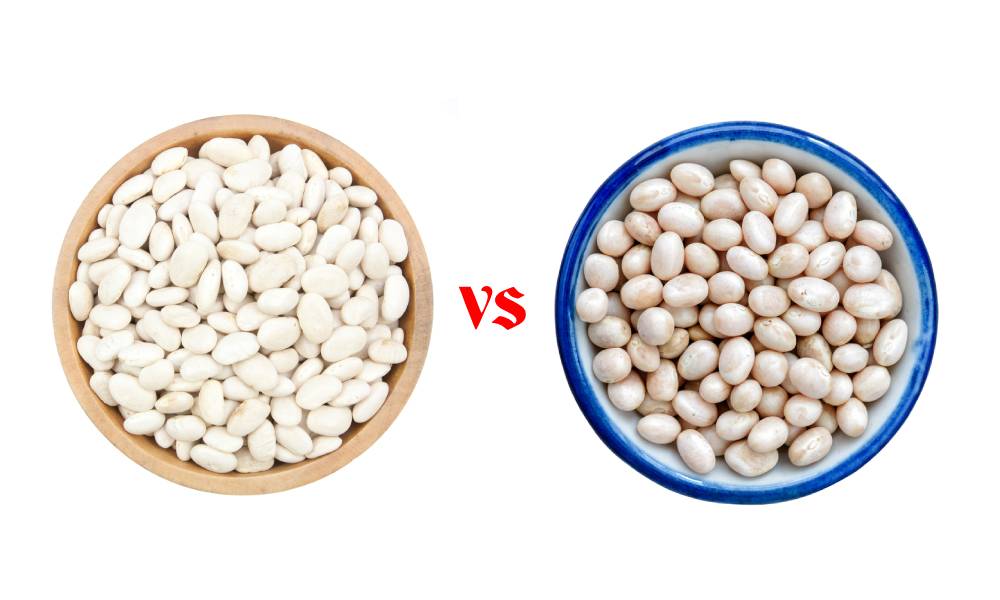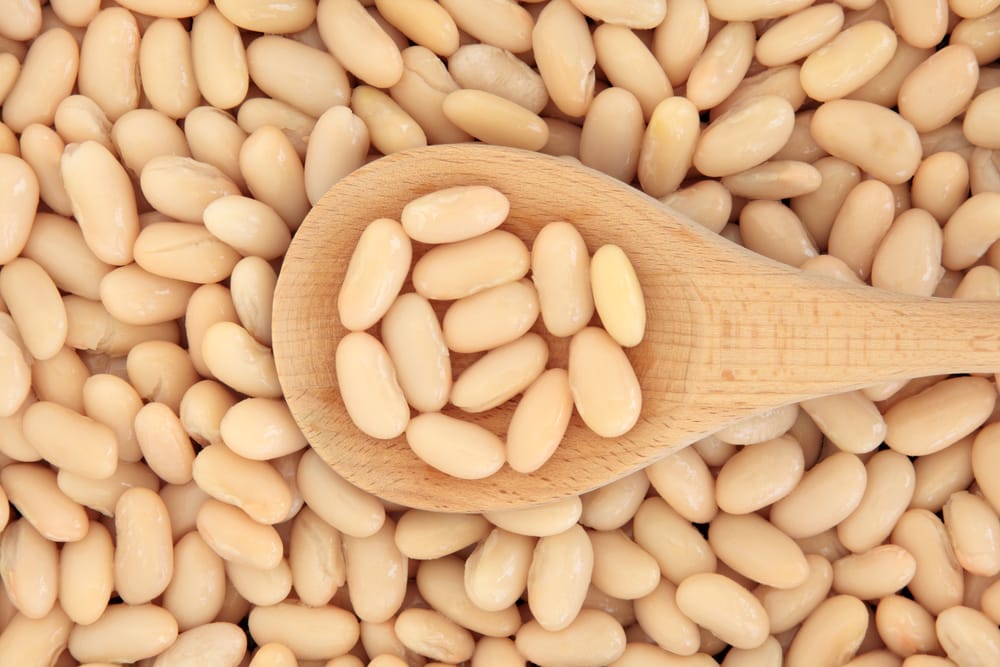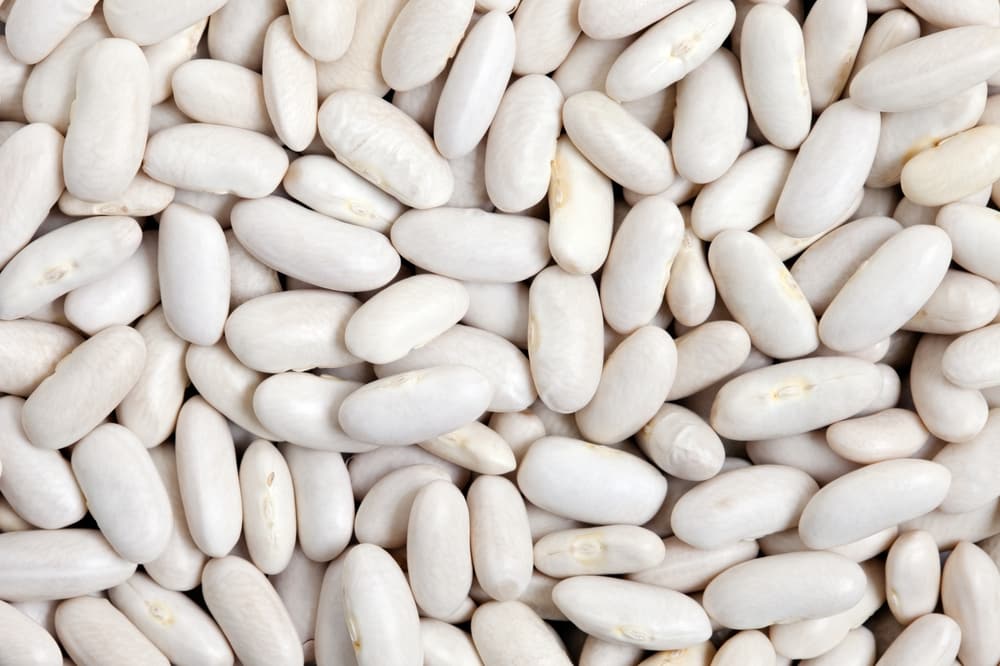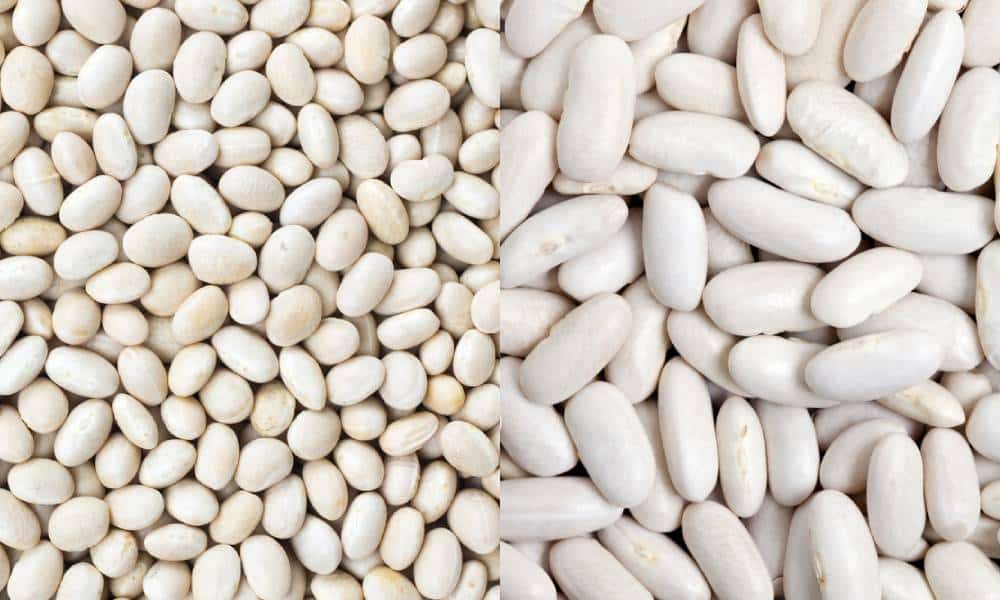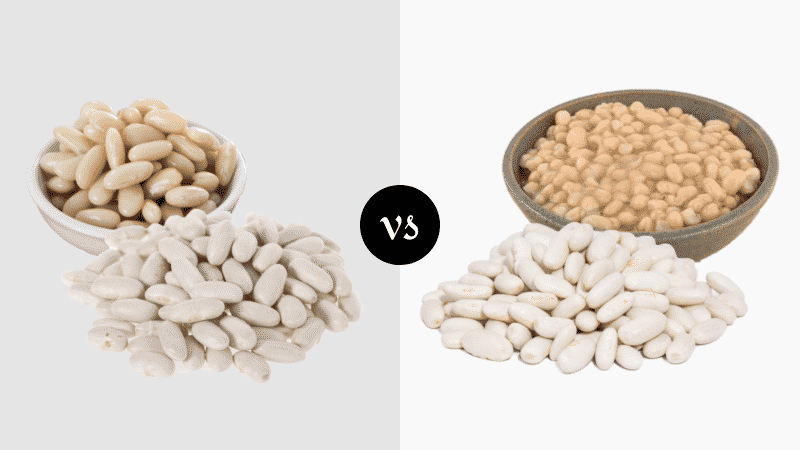
DISCLOSURE: This post may contain affiliate links, meaning when you click the links and make a purchase, I receive a commission. As an Amazon Associate I earn from qualifying purchases.
Many recipes mention white beans. However, it can get very confusing when you have to decide which you’re supposed to pick whilst browsing the aisles of your local grocery store.
Most canned beans don’t come with a long description that tells you precisely which type of beans are contained within. At times, a ‘white beans’ label and an accompanying image will be the only description you get.
The two main varieties of white beans are Cannellini and Great Northern. We’ll be explaining all the differences so that you always know which is which between Cannellini beans vs. Great Northern.
[amazon box=”B074H5J2V7″]
Are Cannellini Beans And The Great Northern Beans Different?
Yes, absolutely – cannellini beans and the great Northern beans are different despite both being from the pole bean family.
They can’t simply be considered good protein sources with different names because each has a distinctly different taste.
This doesn’t mean that they aren’t interchangeable, but before you can judge which is best for your recipe, you need to understand the similarities and defining differences.
[amazon box=”B08DW3STHW”]
Cannellini Beans Vs. Great Northern Beans Similarities
Both beans are a close match to each other. Even the taste of cannellini beans and Great Northern beans are pretty similar.
Each contains a high concentration of soluble fiber with a very low amount of fat and almost zero cholesterol. This makes cannellini and great northern beans excellent additions to a healthy, well-rounded diet.
Recipes that mention white beans can be confusing because both cannellini beans and the great northern beans are white and pretty much similar in taste.
Both of these beans contain a high amount of soluble fiber. The best part about both of these beans is that they contain a very low amount of fat with almost no cholesterol, making them a perfect addition to your diet plan.
We all know that beans are legumes and legumes are one of the best gifts that nature has given to this world. You can have beans added to any recipe, including main dishes or desserts.
All of these similarities make cannellini beans and great Northern Beans quite interchangeable and pretty much similar. However, there are a few differences between them as well.
Cannellini Beans Vs. Great Northern Beans Comparison
| Cannellini Beans | Great Northern Beans | |
| Size | Large – Bigger Than Kidney Beans | Small- Similar Size To Lima Beans |
| Names | White Kidney Beans, Italian Kidney Beans | Navy Beans, Boston Beans, White Pea Beans, Pea Beans, Haricot Beans, Pearl Haricot Beans |
| Appearance | Large And White With Rounded Ends Resembling A White Kidney Bean | Unmarked Small White Flattish Bean With Rounded Ends |
| Flavor | Mildly Nutty With Prominent Meaty Flavor | Subdued Nuttiness With Milder Nutty Flavor Than Cannellini Beans |
| Texture | Thick Skin, Meaty, Tender, Creamy | Thin Skin, Mildly Meaty, Tender, Creamy, Grainier Than Cannellini |
| Nutrition | 242 Calories, 17G Protein, 0.6G Fat, 11G Fiber, 55% DV Copper, 36% DV Folate, 36% DV Iron, 16% DV Calcium, 12% DV Vitamin B-6 | 118 Calories, 8.3G Protein, 21G Carbs, 7G Fiber, 25% DV Magnesium, 10% DV Vitamin B-6, 31% DV Vitamin C, 10% Iron, 10% Vitamin B6, 1% Calcium |
| Affordability | Affordable But More Expensive Than Great Northern Beans | Highly Affordable, Cheaper Than Cannellini Beans |
Cannellini Beans vs Great Northern Beans
Both varieties of beans are interchangeable in most meals, granting a similar texture and taste. Here’s a comprehensive breakdown of the differences between Cannellini beans and Great Northern beans.
Cannellini Beans
Whether you’re making pasta, soup, stew, or salad, Cannellini beans are an Italian staple that no kitchen can go without. Let’s take a closer look at what makes these large white beans so unique and sought-after.
- Size
Cannellini beans are remarkably similar in size and appearance to white kidney beans.
So much so that they’re often called Italian kidney beans. Cannellini beans are, however, slightly larger than traditional kidney beans. They’re generally the largest white bean available.
- Names
Look for Cannellini beans marked as either white kidney beans or Italian Kidney beans.
- Appearance
The closest comparison to cannellini beans would be large, white kidney beans with squarish ends. This is why you typically find varieties labeled as white kidney beans instead of Cannellini by certain brands.
- Flavor
Cannellini beans have a mild nutty flavor and are meatier than Great Northern beans.
- Texture
The outer layer of cannellini beans is thick, and the inside is meaty and tender with a creamy texture. They hold their form and retain a fairly solid consistency when cooked.
- Nutrition
Cannellini beans come packed with nutrition. At 17 grams of protein, 0.6 grams of fat, and 242 calories, they give the average 150-pound adult roughly a fifth of their protein intake per serving.
You also get 55% of the recommended daily intake of copper, 36% folate, and 36% iron.
- Uses
As a firm bean that holds its form and consistency well, cannellini beans are popular in stews, soups, salads, and chili.
The nuttiness adds dimensions of flavor to meals with chicken and fish while tasting just as great in minestrone. Italian recipes favor cannellini beans, featuring them in a large number of dishes.
- Affordability
Cannellini beans are highly affordable but more expensive than Great Northern beans, pricing in the region of $1.5 to $2.50 per pound on average in the USA.
Great Northern Beans
Delicate Great Northern beans, with their grittier texture, are preferred by some over Cannellini, but it all depends on the consistency your recipe calls for.
Affordable, tasty, and tiny enough to be included in all types of meals, let’s take a closer look at what makes Great Northern beans special.
- Size
Great Northern beans are much smaller than Cannellini beans and slightly flat, similar to Lima beans.
As medium-sized beans, they’re bigger than double the size of black-eyed peas and roughly half the size of regular kidney beans.
- Appearance
Great Northern beans are white small, slightly flat, and oval-shaped. There are no markings whatsoever.
- Names
Look for Great Northern beans marked as Navy beans, Boston beans, white pea or pea beans, haricot beans, or pearl haricot beans.
- Flavor
Just like cannellini beans, Great northern beans are nutty but with a less intense flavor. Delicate and subdued, they’re less “beany” than other varieties, which makes them one of the most versatile options out there.
- Texture
The thinner skin and more delicate flesh give Great Northern beans a slightly grainier texture than cannellini beans. Expect less creamy flesh and a bean that often cooks away easily rather than retaining its form.
- Nutrition
Great Northern beans, also referred to as Navy beans, are slightly less nutritious than cannellini beans but are still nonetheless healthy.
Each serving gives you 118 calories, 21g of carbs, and 7g of fiber. They’re lower in calories but also lower in protein, arriving at 8.3g per 100g of beans.
- Uses
The mild indistinct flavor of Great Northern beans makes them a very versatile ingredient that takes the taste of whatever spices of stock you add while cooking them.
You’ll also find that the light nuttiness is ideal for bean dips and mixed bean salad while suiting all tips of stews and soups as well.
- Affordability
Great Northern beans are slightly cheaper than Cannellini beans, pricing between $1 and $2 per pound on average in the USA.
Which Is The Best – Cannellini Beans Or Great Northern Beans?
If you still can’t decide which to buy between Cannellini beans vs. Great Northern Beans, we suggest considering the size that you need.
Both beans taste similar and cook in just about the same amount of time. Picking according to size simplifies things now that you know all the main differences between these two types of delectable beans.
